2017-02-13 By Robbin Laird
During the first week of February this year (February 7-9), the Chief of Staff of the Norwegian Air Force sponsored an airpower conference entitled “Evolution to a Fifth Generation Air Force.”
I had a chance as well to conduct a number of interviews while in Norway and those will be published over the next few weeks.
Those interviews and the Norwegian presentations at the Conference focused on the way ahead for Norway in the transformation of its defense in a changing strategic situation for NATO in the Northern tier.
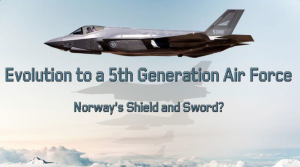
What was especially interesting for me with my opportunities to deal with the USMC as they are constructing their three dimensional force under the impact of the Osprey and the F-35, the UK undergoing both shaping a post-Brexit defense policy and forging its own air and naval power transition and the Aussies both pursuing Plan Jericho for the Air Force and force structure transformation and integration under the impact of fifth generation airpower, is to see many similarities among the three forces as they work towards force transformation.
https://sldinfo.com/the-f-35b-in-the-perspective-of-aviation-history/
https://sldinfo.com/download-the-three-dimensional-warriors/
https://sldinfo.com/new-approaches-to-air-sea-integration/
What is evident in each case is that the F-35 is a core capability but less as an in itself platform but as a stimulant and foundation for overall force transformation.
It is a key part of what the USN leadership is referring to as shaping a kill web where distributed force can operate throughout a battlespace to deliver the combat effects which one needs against evolving threats and challenges.
We have argued that it is about shaping a networked honeycomb force able to operate in discrete interactive force packages to deliver deterrence in depth.
https://sldinfo.com/extending-the-honeycomb-transformation-re-visited/
What one saw with the Norwegian presentations and discussions both public and private was a clear focus on shaping a new approach to national defense and one which needed to have plug and play capabilities with core allies to ensure that both the extended defense of Norway could be ensured as well as enhancing Norway’s contribution to Northern tier NATO defense.
There were briefings on the two core new air systems which are coming to the Norwegian Air Force, namely the F-35 and the P-8.
The F-35 is seen as not simply replacing the F-16s but providing new capabilities useful to the joint force and with extended reach for airpower in ensuring expanded defensive punch.
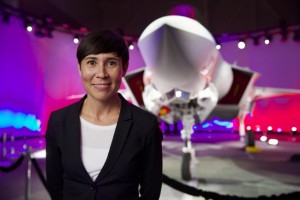 Norway’s Minister of Defence, Ine Eriksen Søreide, in front of the country’s first F-35 combat aircraft. (Photo: Torgeir Haugaard/Forsvaret)
Norway’s Minister of Defence, Ine Eriksen Søreide, in front of the country’s first F-35 combat aircraft. (Photo: Torgeir Haugaard/Forsvaret)
The P-8 is seen as part of the return of North Atlantic defense, which has been necessitated, by the modernization of Russian forces and the enhanced capabilities of the Russian for bastion defense in the region adjacent to Norway.
The integration challenge as seen by Norway, Australia and the Brits is the central one – simply following a platform additive path will not get them where they need to go – which is extended defense of the homeland. For the Norwegian air, naval and army speakers, force integration was a key theme.
For the Navy, the surface and modernizing subsurface fleet clearly had opportunities to leverage both of the new air platforms coming to the force. Clearly, one such capability is the off boarding of weapons whereby the F-35 can call on joint fires from the ground or sea to generate integrated firepower.
For Norway, the integration of Aegis with F-35 is clearly an opportunity and they will work closely with the USN on this strategic challenge and opportunity.
https://sldinfo.com/pacific-strategy-vii-“aegis-is-my-wingman”/
http://www.usni.org/document/laird-robbin-2012-138-1-1307pdf?magazine_article=9450
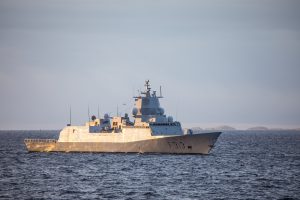 Fra KNM Helge Ingstad avbildet utenfor Bodø før det årlige Marinemesterskapet / HNoMS HELGE INGSTAD under transit from Haakonsvern Naval Base to Bodø in Northern Norway.
Fra KNM Helge Ingstad avbildet utenfor Bodø før det årlige Marinemesterskapet / HNoMS HELGE INGSTAD under transit from Haakonsvern Naval Base to Bodø in Northern Norway.
For the Norwegian Army, much like for the Australian Army, the F-35 is seen as a key asset to support the ground maneuver force.
And for the Norwegian Army, senior leadership sees the opportunities inherent in vehicle modernization to shape a more integrated digital ground maneuver force, which can provide situational awareness to the air force as well with regard to targets of interest in a fluid battlespace.
For the Air Force, the shaping of the infrastructure of the F-35 and the coming of the F-35 to Norway later this year are major strategic challenges and opportunities.
It was clear from presentations that the all weather capability of the F-35 provided by its integrated sensor suite is a key advantage in supporting national forces in the kinds of conditions in which the Norwegians need to provide for their defense.
It is also the case that the capabilities of the aircraft when properly cross linked can provide for an extended defense capability simply beyond the capabilities of the current F-16 fleet and one speaker highlighted the need for the Norwegian Air Force to shape concepts of operations symmetrical with such capabilities.
We have referred to this elsewhere as shaping the offensive defensive enterprise crucial to any deterrence in depth strategy.
https://sldinfo.com/transforming-the-power-projection-forces-for-the-liberal-democracies/
It is clear as well that the fact that core allies of Norway in the region whether the Brits, the Danes, the Dutch or the Americans flying the same aircraft will allow for a much greater interoperability capability.
And the fact that Britain and Norway will both fly the P-8 and leverage Lossiemouth as well provides new opportunities as well.
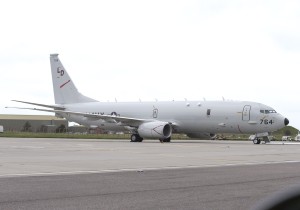
According to one senior Norwegian official, although integration is challenging, the new equipment can provide greater opportunities to build in integration from the ground up.
Joint training at Luke for the F-35, flying with F-35s from Marham, the Queen Elizabeth with the USAF from Lakenheath (25 miles from Marham), from Denmark and Holland, allow for a Red Flag kind of training as these common aircraft work together.
The USN-USMC working through its own integration of P-8/Triton with F-35 can provide an important asset as well for Norway’s own efforts.
A key requirement for Norway is rapid and effective reinforcement by allies in case of crises.
The Cold Response exercises as well as the Trident Juncture exercise coming next year are key elements of the reshaping both the Norwegian concepts of operations and plug and play capabilities for strategic reinforcement.
https://sldinfo.com/usaf-support-to-marines-during-cold-response-exercise/
https://sldinfo.com/field-life-during-cold-response-16/
https://sldinfo.com/u-s-marines-during-cold-response-16/
https://sldinfo.com/cold-response-2016-norwegian-troops-in-the-exercise/
https://sldinfo.com/nato-forces-in-cold-response-2016/
A USMC general, who spoke during the conference, underscored that the old days of stockpiling equipment and slow rolling force into a crisis was simply not going to work against evolving capabilities of adversaries.
Clearly, rapid insertion in a plug and play manner is a crucial element for force generation and deterrence in depth.
And sustainment is a key part of any effective national defense strategy.
The Norwegians are clearly looking at the need for a robust European sustainment capability for the F-35 as a key element of their force building strategy and support for the kind of sortie generation rates necessary for their defense.
A key challenge facing Norway will be the shaping of an effective C2 system for national defense.
How best to integrate an agile force able to operate over the vast regions of Norway, the Arctic and the North Atlantic to provide effective management of an extended defense force?
The speakers highlighted the importance in the uptick of UK engagement with Norway and the central importance of working with the USMC, the USN and the USAF as well.
Similar to the famous Sherlock Holmes story where the key to the mystery was the dog that did not bark, Canada was barely mentioned even though with the emphasis on the North Atlantic and the Arctic Canada is a crucial player.
But with no serious force modernization plans in process, how will the UK, the US and Norway deal with Canada and any strategic gap left by Canada’s non-modernization of forces?
In effect, NATO is entering a new phase whereby those countries, which take Article III seriously, will anchor regional defense and force integration.
It is difficult to defend those who have no real approach to their own defense. And notably with regard to Norway they are working closely with Finland and Sweden as well to shape an extended defense strategy.
For example, later this year, the Air Forces of these three countries will conduct a common Arctic security and defense exercise.
According to a press release by the Norwegian Air Force published in early February 2017:
The Air Forces of Finland, Norway and Sweden will host multinational Arctic Challenge Exercise 2017 from 22 May to 2 June 2017. More than one hundred aircraft from twelve nations will participate in the air exercise carried out in the airspace over the northern areas of the host countries.
This year’s Arctic Challenge Exercise (ACE 17) is the third of its kind that Finland, Norway and Sweden have organised together. The exercise conducted every second year since 2013 is this time led by the Finnish Air Force that is responsible for planning and direction of the training event.
ACE 17 provides opportunity to train the large-scale planning and conducting of air operations in a real-like operating environment that involves a wide range of aircraft and forces of modern air warfare.
Arctic Challenge exercises are part of Cross Border Training (CBT) started in 2009 between Finland, Norway and Sweden. The Air Forces of these nations conduct on almost a weekly basis combined air combat training missions that are flown from their northern home bases. The cost-effective implementation pattern of combined exercises can also be applied to large-force air exercises.
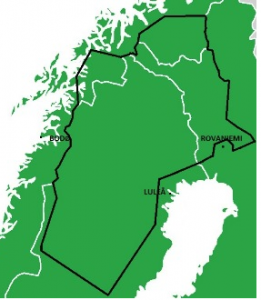
Arctic Challenge Exercise 2017 is one of Europe’s largest live air exercises. It will gather more than over one hundred aircraft. In addition to multi-role fighters, transport and liaison aircraft, aerial refuelling tankers, airborne warning and control system aircraft, and transport and search and rescue helicopters can be seen in the exercise. Participating nations are Finland, Norway, Sweden, Belgium, Canada, France, Germany, Great Britain, the Netherlands, Spain, Switzerland and the United States.These will be supported by NATO-operated airborne warning and control system (AWACS) aircraft and also by ground crew and ground-based air defence units.
The ACE17 host bases are located in Bodø in Norway, Luleå in Sweden, and Rovaniemi in Finland. Flying is conducted from Monday to Friday in two to three daily waves from 9 till 18 Finland time (from 8 till 17 Norway and Sweden time). Flight missions are carried out in the areas extending over the three nations’ northern regions (see Map of Area of Operation).
Also the training areas of Rovajärvi in Finland, Vidsel in Sweden and Setermoen in Norway are available. Simultaneously with ACE17, the Finnish Defence Forces Army North 17 exercise is being conducted at Rovajärvi which will enable the exercise units to have the benefit of ACE17 flight missions directed into this area to their training. In addition, aircraft will operate in Lohtaja training area in Finland where, at the same time, the Finnish Defence Forces Air Defence Exercise 1/17 is going on.
Around ninety aircraft at most may participate simultaneously in individual waves in ACE17. Exercise sorties will involve flying at low altitudes and they may also include supersonic flying. Aircraft will deploy flare countermeasures that can be seen as bright spots of light in the sky.
In short, Norway is taking defense modernization seriously and are challenging core allies to work effective means to work together to deal with evolving challenge to the East.

